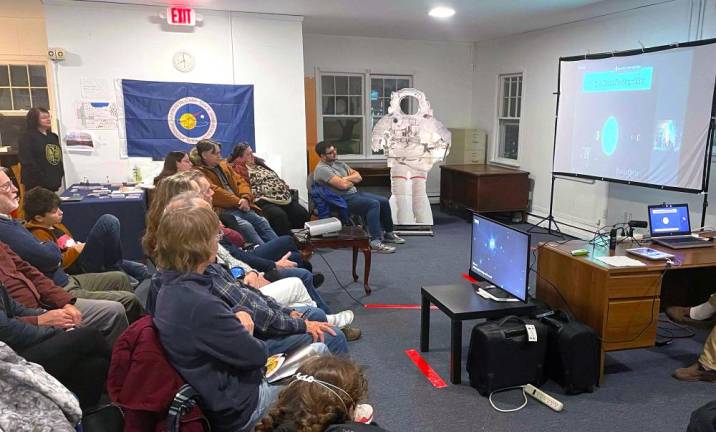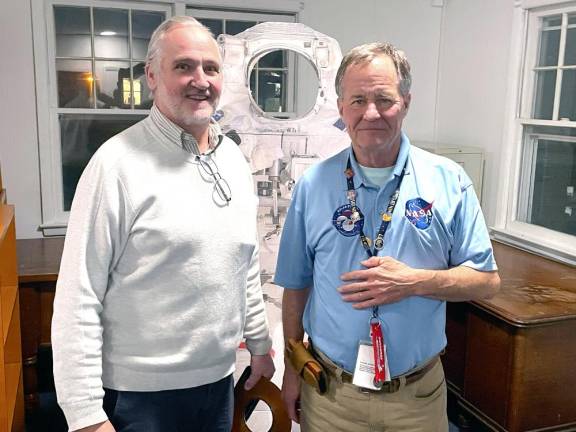Warwick Robotics Club enjoys Webb telescope lecture
Warwick. This unique event featured one of the big names behind this revolutionary piece of deep space imaging equipment.


Before a packed room of 45 attendees at Mountain Lakes Park on Thursday, November 30, Bill Ochs (pronounced “Oaks” and not related to the Warwick farm family), retired NASA James Webb Space Telescope operations servicing mission manager, demonstrated to the room how his team was able to plan and successfully launch the Webb telescope, during an hour-long Zoom presentation from his office in California. This event was arranged by NASA representative Jim Hall and Warwick Robotics Club leader Paul Woods.
Ochs explained that three different countries (the Canadian Space Agency, the Japanese Space Agency JAXA, and NASA), together with dozens of diverse team members that endured an intricate 10-year period of extensive testing and modeling, helped to finally launch the Webb telescope that extended the reach of our planet’s observations into the history of the observable universe.
Launched on Christmas day in 2022, the James Webb Telescope gave planet Earth inhabitants a look back into what the universe looked like 13.5 billion years ago. Earth is estimated to be only 3.5 billion years old, so we can now, thanks to the Webb Telescope, see parts of the universe 10 billion years before Earth formed. Unlike the earlier Hubble, Webb is the “scientific successor” to Hubble. According to NASA, “Hubble’s science pushed us to look to longer wavelengths to “go beyond” what Hubble has already done. Webb primarily looks at the universe in the infrared, while Hubble studies it primarily at optical and ultraviolet wavelengths (though it has some infrared capability).
Ochs revealed that Webb also has a much bigger mirror than Hubble, requiring an intricate folding technique to allow it to fit inside the launch rocket, and then unfold into place when it arrived at its destination. “This larger light collecting area means that Webb can peer farther back into time than Hubble is capable of doing. Hubble is in a very close orbit around the Earth, while Webb will be 1.5 million kilometers (km) away at the second Lagrange (L2) point,” said Ochs.
At the end of Och’s presentation there was time for a few questions from the audience who eagerly hung on the guest’s every word. One question dealt with the structure’s ability to withstand the periodic bombardment of microparticles (tiny asteroids and other space debris that is always affecting planets, moons, and anything else in orbit). Ochs replied that the Webb telescope has already withstood such an event with only minor disturbances that barely diminished the telescope’s ability to continue sending data to Earth. Webb is expected to last at least another 10 years of communication with our planet, and contains enough hydrazine fuel to last even longer.
To learn more about the Webb program and view some of the more recent images, go to webbtelescope.org. And to discover some of the upcoming programs that the Warwick Robotics Club is involve in, and to learn about the team’s award-winning accomplishments, visit warwickrobotics.weebly.com.